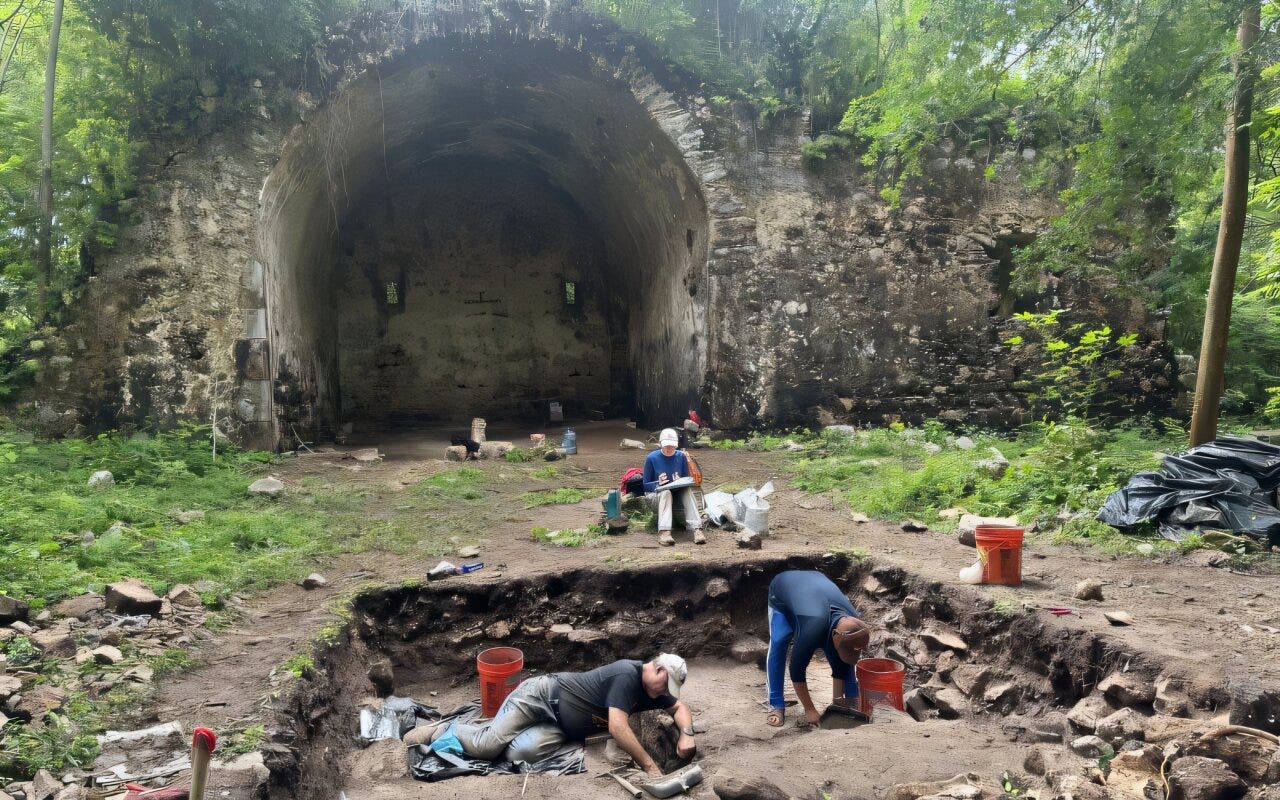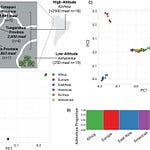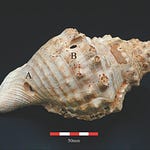In the 16th century, as Spanish friars pushed deeper into the Yucatán, they built more than churches—they built social experiments. One of those experiments was Hunacti, a visita mission town founded in 1557 and abandoned by 1572. In its brief 15-year life, Hunacti tells a story of paradox: a place that outwardly embraced colonial order yet quietly resisted, holding fast to Maya traditions even as persecution closed in.

Hunacti looked the part of a model town. Streets ran in a grid, leading to a central plaza dominated by a T-shaped church. Around it rose three grand houses, plastered and arched in Spanish fashion. Historical records suggest its leaders enjoyed rare privileges—horses, cacao orchards, and access to labor for building projects.
Yet beneath that facade lay currents of defiance.
“Hunacti is a paradox,” said archaeologist Marilyn Masson, who co-authored the study published in Latin American Antiquity1. “It was grandly built, with cooperative leaders at first, yet it became known for ongoing resistance, even when the costs were high.”
Idolatry Trials and a Town Under Siege
Those costs came swiftly. By the 1560s, Hunacti had drawn the attention of Franciscan inquisitors enforcing Christianity through notorious idolatry trials. In 1562, town leader Juan Xiu was accused of human sacrifice. He and eight others died under torture. The violence didn’t end there: later leaders were publicly lashed for keeping Maya rites alive. A chilling episode in 1561—a stillborn child marked like a crucified Christ, reported by Xiu himself—may have sealed Hunacti’s fate in Franciscan eyes. Famine struck in 1572, and the town was abandoned.
What the Archaeology Shows
Excavations at Hunacti’s plaza, church, and elite residences offer a view beyond colonial chronicles. Beneath the polished floors, archaeologists found effigy censers—ceramic incense burners shaped like deities—tucked in corners and layered above late-period floors. They were still in use when the town’s final residents walked away.
“Many of the censers were found above the last colonial floors, suggesting their use continued until the settlement’s end, despite Franciscan prohibitions,” Masson noted.
Other finds reinforce this picture of autonomy:
Local over imported: Stone tools made of local chert and limestone dominate. Only one European metal artifact—a hatchet—appeared.
Sparse Spanish goods: Few imported ceramics or market items, suggesting a retreat from colonial trade.
Faunal remains: Mostly native game such as deer and peccary, with the exception of one horse—a symbol of elite status.
Resistance in Plain Sight
If Hunacti began as a cooperative town, it ended as something else: a community tightening its circle, resisting through household ritual and limited engagement with Spanish systems. Masson argues that this was a calculated strategy.
“Success in this context isn’t just about wealth or imported goods,” she explained. “It’s about sustaining your own traditions and making your own decisions, even under intense outside pressure.”
For the Maya residents of Hunacti, that autonomy came at the cost of survival as a town. But the fragments they left behind—the censers, the chipped chert blades, the hidden symbols—speak to resilience.
Why It Matters
Hunacti’s story complicates the old narrative of passive assimilation. Instead, it reveals a spectrum of strategies—negotiation, adaptation, and defiance—played out in kitchens, plazas, and ritual spaces. It also underscores why household archaeology matters: the smallest artifacts can rewrite colonial history.
Four centuries later, Hunacti stands as a cautionary tale about power, culture, and the choices people make when forced to live between two worlds.
Related Research
Restall, M. (1997). The Maya World: Yucatec Culture and Society, 1550–1850. Stanford University Press.
Hutson, S. R. (2016). The Ancient Urban Maya: Neighborhoods, Inequality, and Built Form. University Press of Florida.
DOI: 10.5744/florida/9780813061817.001.0001Clendinnen, I. (1987). Ambivalent Conquests: Maya and Spaniard in Yucatán, 1517–1570. Cambridge University Press.
DOI: 10.1017/CBO9780511812558Farriss, N. M. (1984). Maya Society under Colonial Rule: The Collective Enterprise of Survival. Princeton University Press.
Masson, M. A., Lope, C. P., Russell, B. W., Hare, T. S., Alvarado, W. C., Serafin, S., Kú, P. D., & Ojeda, B. E. (2025). Archaeological perspectives on confronting social change at the sixteenth-century Visita town of Hunacti, Yucatán. Latin American Antiquity, 1–20. https://doi.org/10.1017/laq.2025.1









